Professional Resignation Letter Template Guide
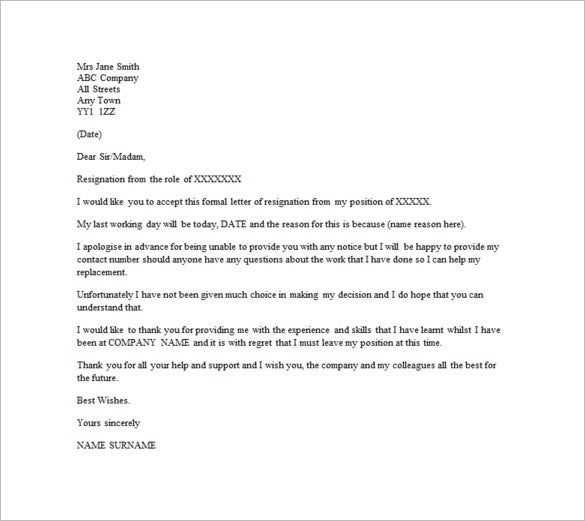
When leaving a job, communicating your decision with respect and clarity is crucial. A well-structured message helps maintain a positive relationship with your employer while ensuring a smooth transition. It’s important to keep the tone formal and considerate, as this document serves as the final impression you leave behind.
Knowing how to write a clear and concise farewell notice can make a significant difference in the way your departure is perceived. A carefully written statement outlines your intent and leaves no room for misunderstandings. This process allows you to express gratitude and ensure that all necessary details are addressed.
Although the format can vary, there are several key elements that every notice should contain. From the opening statement to the closing remarks, each section plays an important role in conveying professionalism and respect. By using a well-thought-out structure, you can avoid common pitfalls and leave on a positive note.
Formal Departure Notice Structure
When preparing a formal communication for leaving a role, it’s essential to present the information clearly and with respect. Such a document should include specific details that ensure clarity, demonstrate professionalism, and preserve a positive relationship with the employer. Below is an outline of the key components that should be included in any official departure notification.
| Section | Details |
|---|---|
| Opening Statement | Clearly state your intent to leave the position, specifying the date of your last day. |
| Gratitude | Express appreciation for the opportunities provided during your time with the company. |
| Reason for Departure | Optionally, provide a brief explanation for your decision, if appropriate. |
| Offer of Assistance | Volunteer to help with the transition process, such as training a replacement or completing outstanding tasks. |
| Closing Remarks | End on a positive note, expressing well wishes for the company and its future endeavors. |
By including these elements, the message remains clear and respectful while maintaining a professional tone throughout the communication process.
Why You Need a Formal Departure Notice
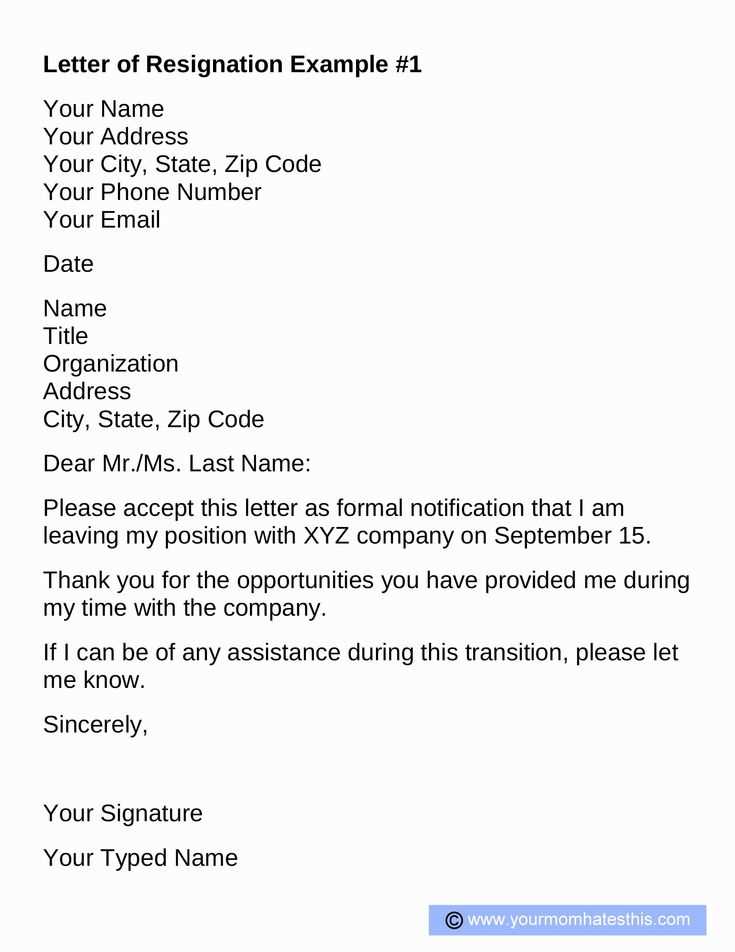
When leaving a job, it’s important to provide a clear, written notification to your employer. This helps maintain professionalism and ensures that your decision is documented. A formal statement serves as both a courtesy and a formal record, offering clarity for all parties involved.
Establishing Clear Communication
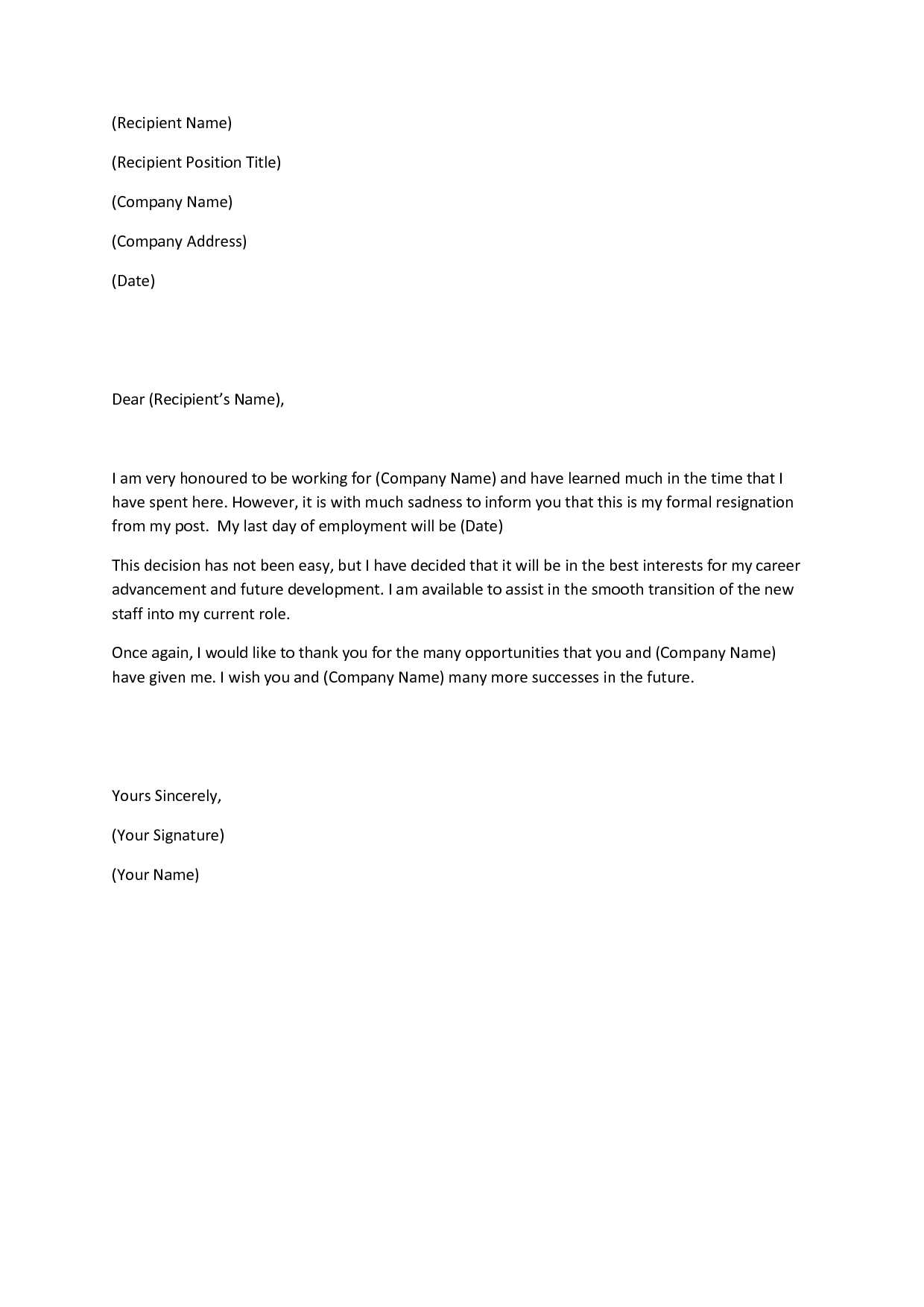
Having a written form of communication helps avoid misunderstandings. It provides a clear outline of your departure date, and when you plan to leave, which helps your employer plan accordingly. A written document offers a formal way to communicate what might otherwise be a more informal conversation.
Ensuring Smooth Transition
By submitting a formal notice, you allow your employer to begin preparations for your departure, such as reassigning your duties or finding a replacement. This proactive approach helps ease the transition for the entire team and ensures continuity of work without disruption.
In addition to being a professional gesture, this document offers legal protection for both you and your employer. It provides a record of your decision and prevents any confusion or potential disputes in the future.
Essential Elements of a Formal Letter
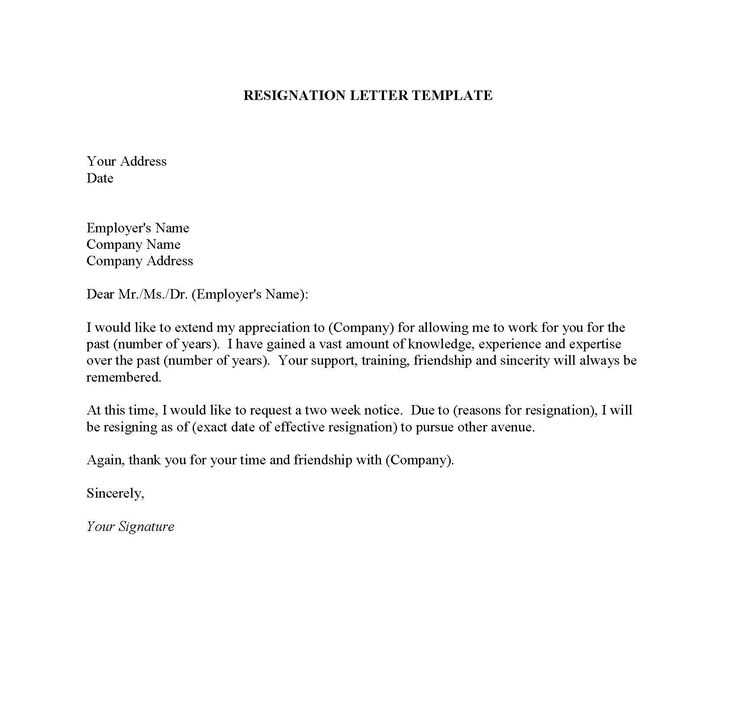
When crafting a written notice for leaving a position, it’s crucial to include several key components to ensure clarity and professionalism. These elements guide the structure and tone of the document, ensuring that your message is communicated effectively. The following are the fundamental aspects to consider when creating such a communication.
Clear Introduction – Begin with a direct statement of your intention to leave, specifying the date of your departure. This sets the tone and informs the recipient immediately of your decision.
Expression of Gratitude – It’s important to acknowledge the opportunities provided by the organization. A brief expression of appreciation for your time with the company helps maintain a positive relationship.
Reason for Departure – While not mandatory, offering a concise explanation for your decision adds transparency. Keep it professional and avoid overly detailed or personal reasons.
Offer of Assistance – It’s polite to offer help during the transition period, such as training a successor or completing remaining tasks. This shows respect for your employer and a commitment to ensuring a smooth handover.
Formal Closing – End the communication on a positive note, wishing the company continued success. This maintains a respectful and professional tone, ensuring your departure is seen as amicable.
How to Customize Your Document
When creating a formal notice for leaving a position, it’s important to tailor the content to fit your specific situation. Customization ensures that the communication feels personal and reflects your professional circumstances accurately. Here’s how you can adjust the structure to meet your needs while maintaining a respectful tone.
Adjusting the Introduction
Start by modifying the opening statement to clearly reflect your intended departure. Be specific about your last working day, ensuring there’s no ambiguity. Personalize the tone to match the level of formality appropriate for your workplace.
Personalizing the Content
Incorporate any details that are unique to your situation, such as reasons for your decision or achievements during your time with the company. While it’s optional to explain your departure, doing so briefly and professionally can enhance the authenticity of your message.
Use appropriate language based on your relationship with the employer. If the departure is amicable, a friendly tone is suitable; if it’s more formal, maintain professionalism throughout. Additionally, offering help during the transition can be tailored based on the circumstances, showing a thoughtful approach to your exit.
Tips for Writing a Polite Departure Notice
When announcing your decision to leave a position, it’s essential to approach the situation with tact and respect. A courteous approach not only ensures a positive relationship with your employer but also sets the tone for your future professional interactions. Below are some helpful tips to maintain politeness in your communication.
Maintain a Respectful Tone
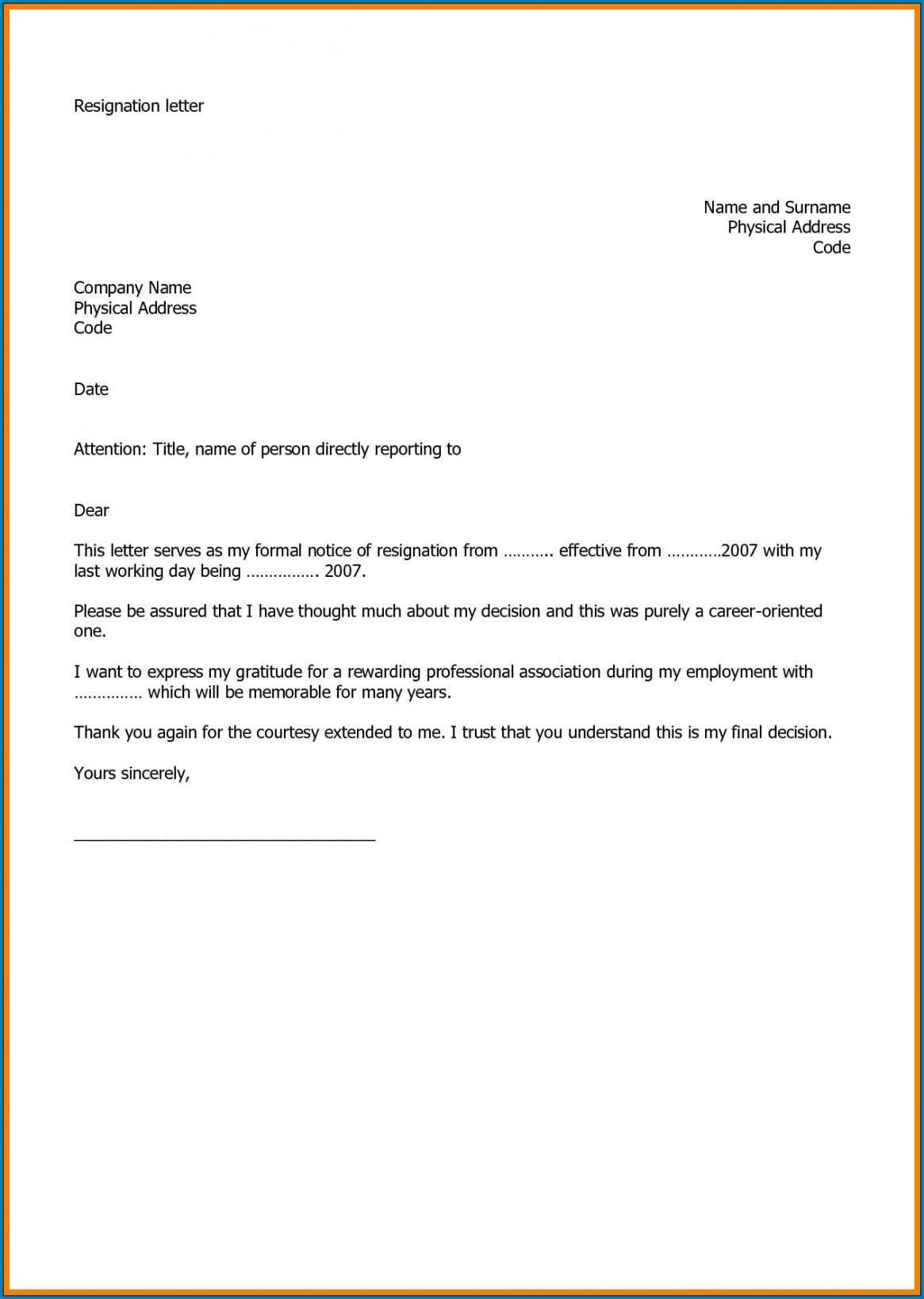
- Start with a clear and direct statement of your decision to leave, but avoid negative language.
- Be grateful for the opportunities and experiences you’ve had with the organization.
- Keep the tone neutral and avoid overly personal or detailed explanations unless necessary.
Be Concise and Clear
- Provide all necessary details, such as your last working day, without unnecessary information.
- Offer your assistance during the transition period, showcasing your willingness to help the company move forward.
- Keep the closing remarks positive, expressing best wishes for the future success of the team and company.
By following these tips, you can ensure that your notice remains courteous, clear, and professional. A polite communication leaves a lasting positive impression and can help preserve important relationships for the future.
Common Mistakes to Avoid in Written Notices
When crafting a formal communication about your departure, it’s important to avoid common pitfalls that can impact the tone and effectiveness of your message. Mistakes in structure, wording, or timing can create misunderstandings or leave a negative impression. Here are some key errors to steer clear of when preparing your document.
Overly Casual or Negative Language
It’s essential to maintain a level of formality and respect. Avoid using informal or negative language that could potentially damage your relationship with the employer. Be careful not to express dissatisfaction or focus too much on any negative aspects of your job.
Providing Too Much Detail
While it’s okay to include a brief reason for your departure, avoid over-explaining or sharing too many personal details. Keeping the message succinct and professional ensures that the focus remains on the transition and the future.
Remember to always proofread your message before sending it. A well-crafted and error-free communication reflects your professionalism and leaves a positive final impression.
Post-Departure: Next Steps to Take
Once you’ve formally communicated your decision to leave your current role, it’s essential to focus on the next steps to ensure a smooth transition. Taking the right actions after submitting your notice will help maintain a positive professional relationship and set you up for success in your next venture. Here are some key things to consider after making your announcement.
Prepare for Transition
Begin by organizing your tasks and responsibilities. Ensure that all projects are completed or handed off properly to avoid any disruption. Create detailed instructions for any ongoing work, so your colleagues can easily pick up where you left off.
Maintain Professionalism
Continue to maintain a positive and professional attitude during your final days at the company. Engage in constructive conversations with your supervisor or colleagues, and offer assistance during the transition period. This will help you leave on good terms and leave a lasting positive impression.
Take time to express gratitude to those who have supported you throughout your tenure. Acknowledging their help is not only courteous but also fosters goodwill for future references and connections.